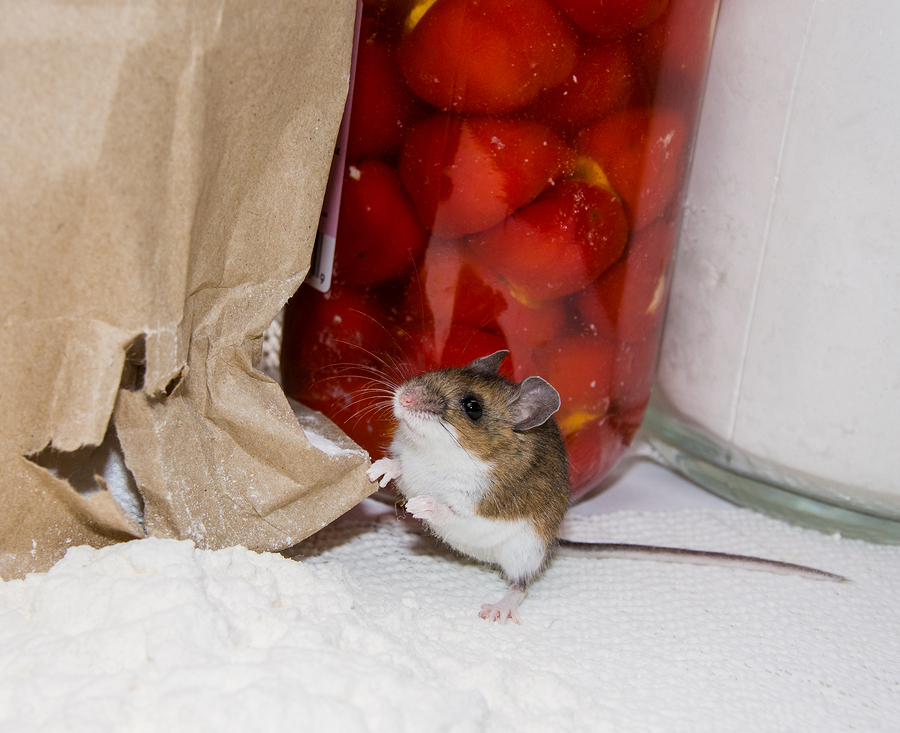Signs You Have A Mouse Problem Even if You Haven't Seen One Yet
ExpiredJust about all of us have read the classic children’s story, “If You Give a Mouse a Cookie.” The tale tells the story of a mouse who, after being offered a cookie, continually wants more and more as a result. While this fictional children’s story is certainly cute, it also tells the truth about mice; If a mouse finds food or shelter in your home, it’ll only keep coming back for more. That’s why we’ve put together this guide to help you understand the signs of a mouse infestation even before you see one of these little critters scurrying past you.
 While you may be under the impression that the occasional mouse in your home is harmless, we can assure you that they present numerous dangers to you and your loved ones. To start, house mice are considered to be a commensal rodent species, meaning they depend heavily on humans for food/water, shelter or both. While this commensal relationship is certainly beneficial to the rodents, it can cause immense harm to human health and our homes.
While you may be under the impression that the occasional mouse in your home is harmless, we can assure you that they present numerous dangers to you and your loved ones. To start, house mice are considered to be a commensal rodent species, meaning they depend heavily on humans for food/water, shelter or both. While this commensal relationship is certainly beneficial to the rodents, it can cause immense harm to human health and our homes.
The Centers for Disease Control and Prevention states that there are numerous diseases that can be either directly or indirectly transmitted to humans by rodents, including house mice. The diseases that can be directly transmitted by rodents include Hantavirus, Pulmonary Syndrome, Hemorrhagic Fever with Renal Syndrome, Lassa Fever, Leptospirosis, Lymphocytic Chorio-meningitis (LCM), Omsk Hemorrhagic Fever, Plague, Rat-Bite Fever, Salmonellosis, and Tularemia. Other diseases can be indirectly transmitted by rodents. These diseases include West Nile Virus, Lyme Disease, Rocky Mountain Spotted Fever, and Colorado Tick Fever and are often transmitted by ticks that hitch a ride into your home on the backs of rodents.
Signs of an Infestation
Simply put, mice pose a threat to your health. If a mouse infestation goes undetected for a long period of time, you’re leaving your family vulnerable to harmful diseases. That’s why it’s important to read up on these signs of a mouse infestation so you can tackle the problem before things worsen.
- Mouse Droppings: One of the most obvious signs of a mouse problem is the sight of their droppings. Mouse droppings are small, dark ovals that are typically no bigger than a piece of lead from a standard pencil. These droppings should be cleaned up and the area should be disinfected immediately. Check the same location for multiple days as mice often travel on the same pathways repeatedly. Since house mice are most attracted to food, you’ll want to check inside your cupboards and kitchen drawers and on your kitchen floors for droppings regularly if you suspect an infestation.
- Grease Marks: The fur of house mice is coated in a thin layer of oil due to the dirty conditions in which they live. For that reason, when mice rub against a surface, it often leaves a dark discoloration on the previously clean surface. For example, if mice are repeatedly sliding under a door, you may notice a dark spot forming at the bottom of the door over time.
- Odor: Another surefire way to tell if there’s a mouse problem in your home is the smell. Mouse urine and feces do leave a strong smell. The smell will be particularly gruesome if you’re closer to the mouse’s nest.
- Mouse Tracks: Mice typically travel down the same pathways repeatedly. For that reason, you should be able to see mouse tracks form over time. You can often see mouse tracks if you shine a light on the suspected surface. For concrete evidence, sprinkle some talcum powder on the suspected route and leave it overnight. In the morning, you may notice some tracks going through the powdered surface.
- Unusual Noises: Mice are nocturnal, meaning they are active during the nighttime. They typically use their paws to investigate their surroundings by scratching surfaces in search of food. That’s why some homeowners find it incredibly easy to detect a mouse problem in the middle of the night. As the mice find their way into the walls of your home, you’ll almost always hear them scratching.
- Nesting Materials: Mice like to build their nests in strategic locations that are quiet and close to a food supply. They often build nests inside of hollow walls, ceilings or floors and have even been observed nesting underneath refrigerators or stoves and inside closets and even cupboards. They build their nests with materials that mimic natural fibers. That’s why they often use paper products or fabric as a nesting material. For that reason, if you find a kitchen towel or an old sweater that has a fresh hole in it or a shredded receipt or paper towel, you can bet that there’s at least one family of mice living inside your home.
- Visible Evidence: If none of this evidence is convincing enough, you may need to actually see a mouse in order to diagnose your infestation. If you really are committed to seeing a mouse firsthand, you’ll want to stake out the suspected location as the sun goes down. If you’re quiet enough and don’t blink, you may just see a furry critter scurry by.
A mouse infestation can be extremely difficult to get rid of. If you suspect that there are mice living in your home, contact the professionals at Spence’s Pest Control today by dialing (804) 794-7738. Whether you need a rodent inspection or a full home treatment or both, our team has almost 40 years of experience serving the Richmond community. We’ve got the know-how to get the job done the right way so these pesky creatures don’t come back.












